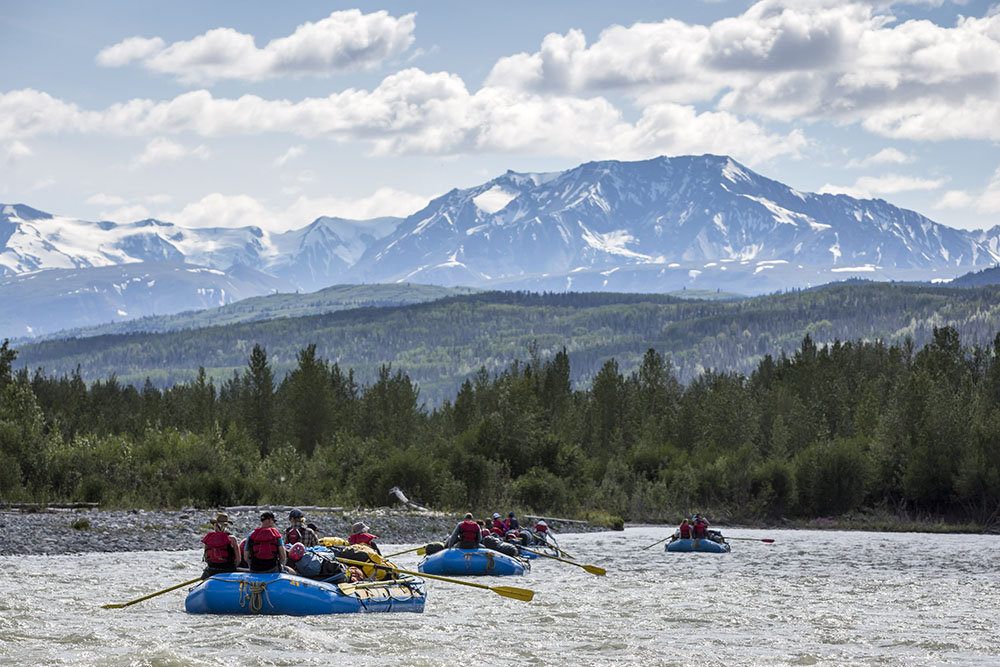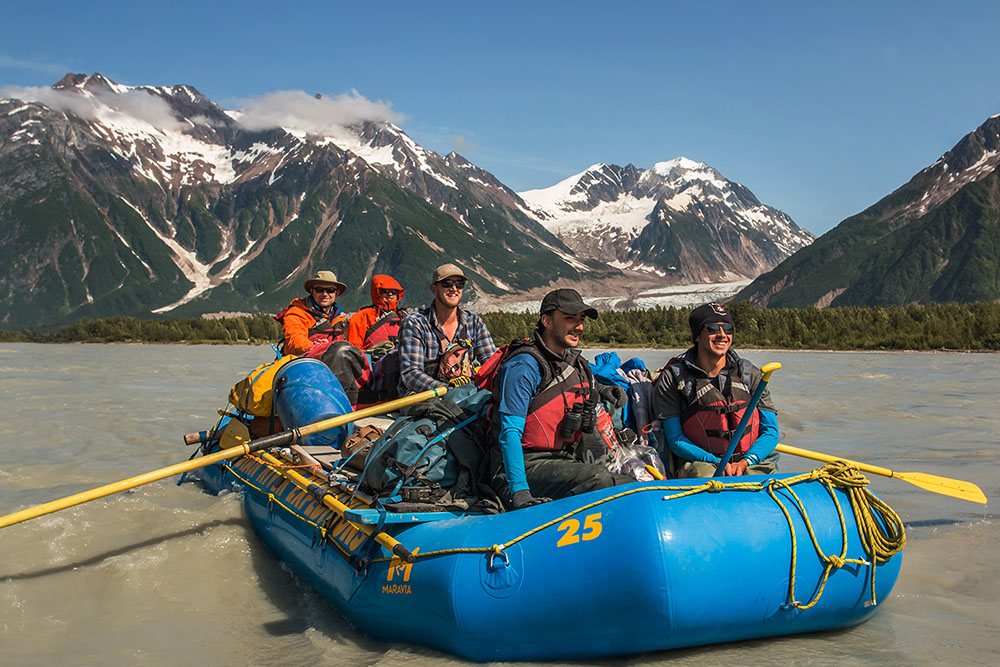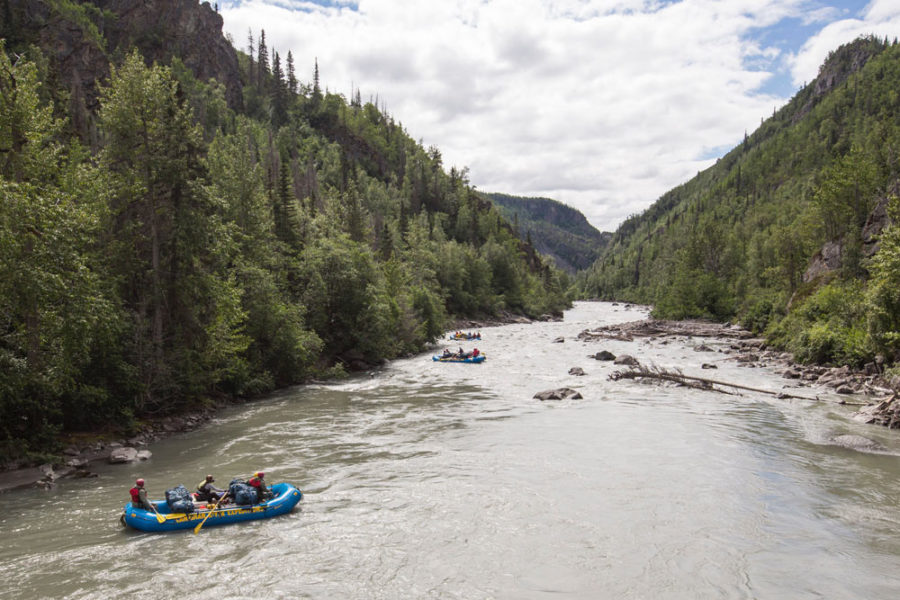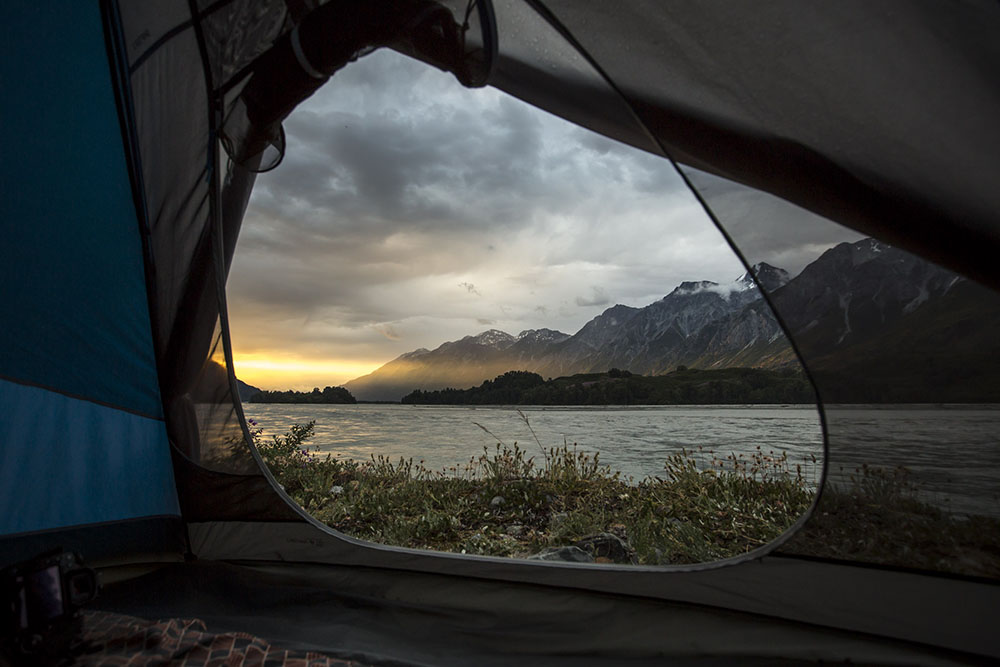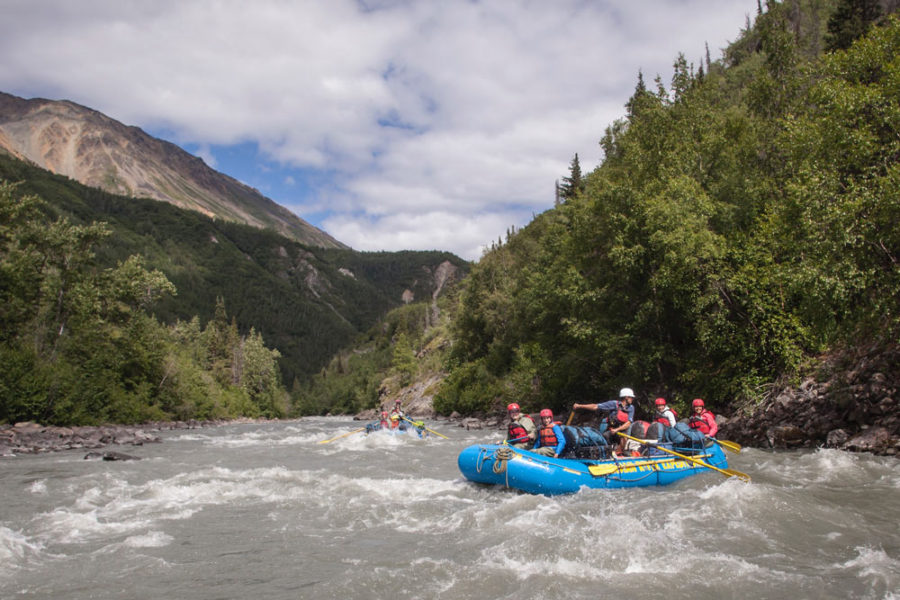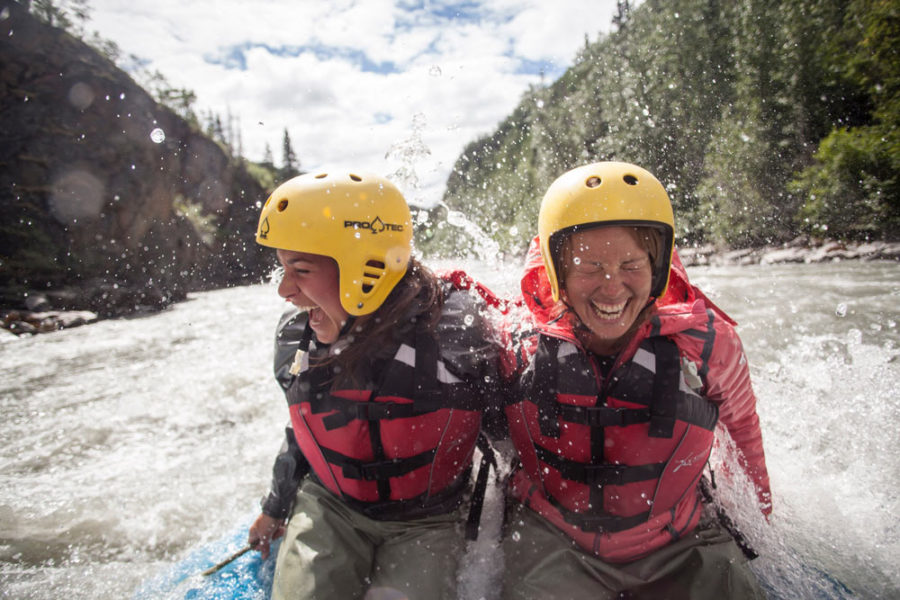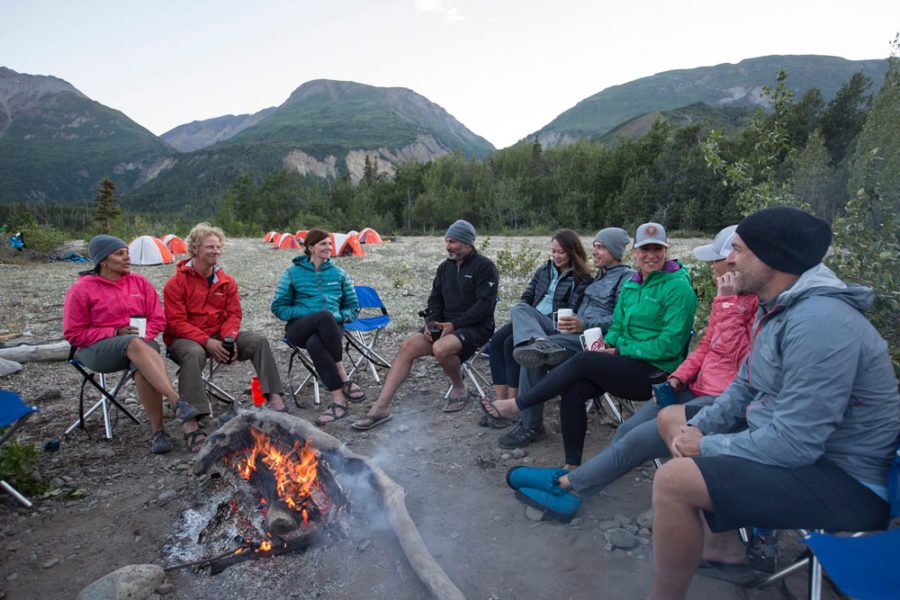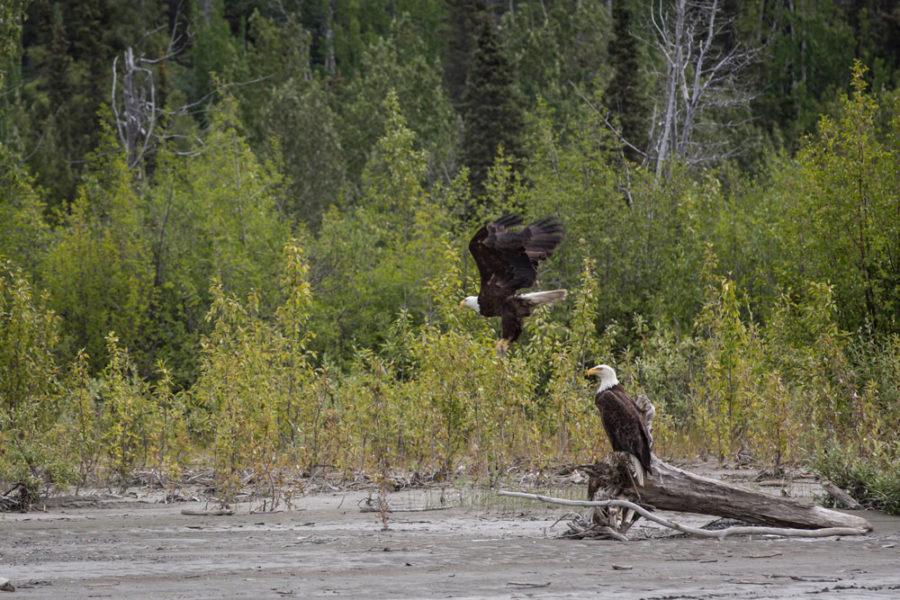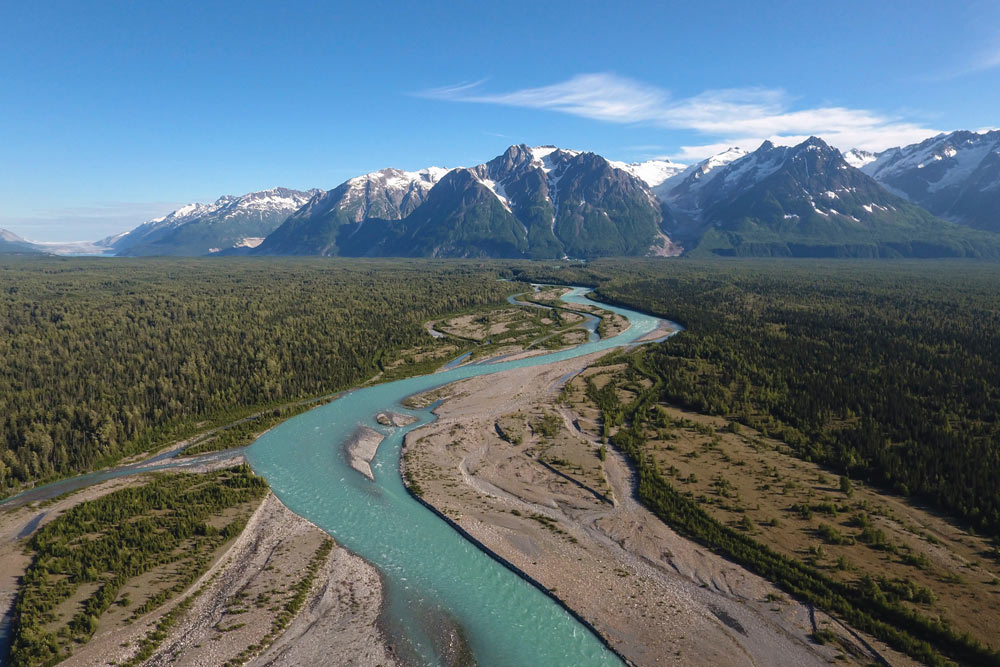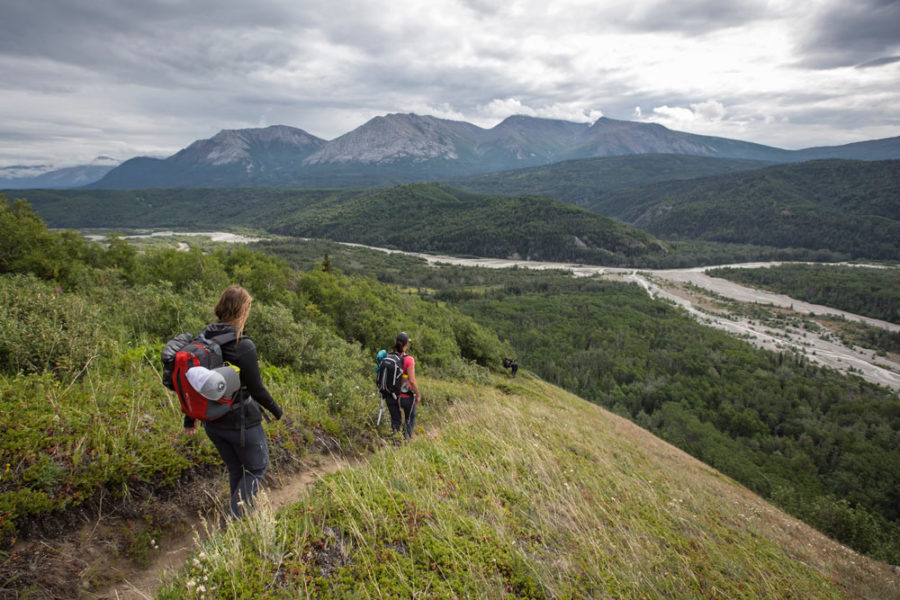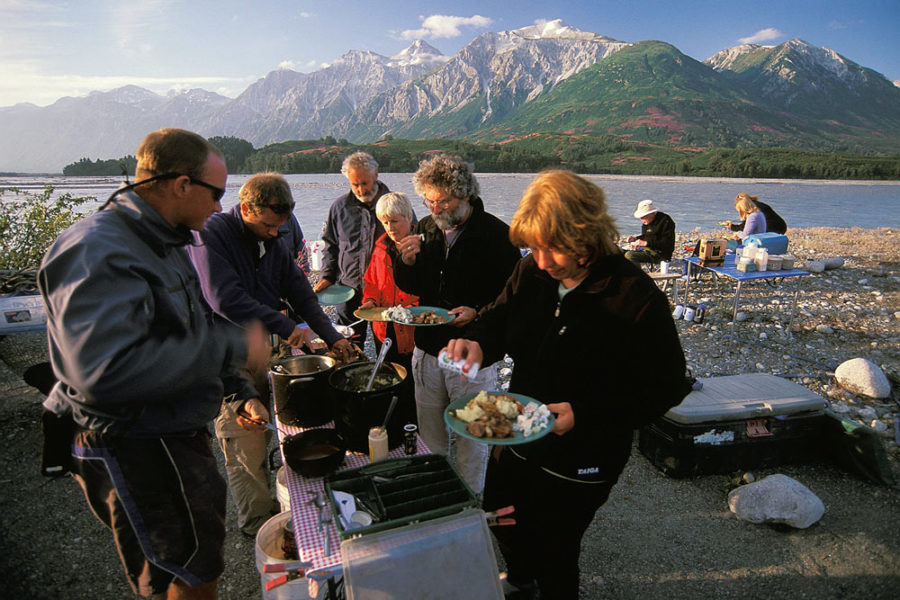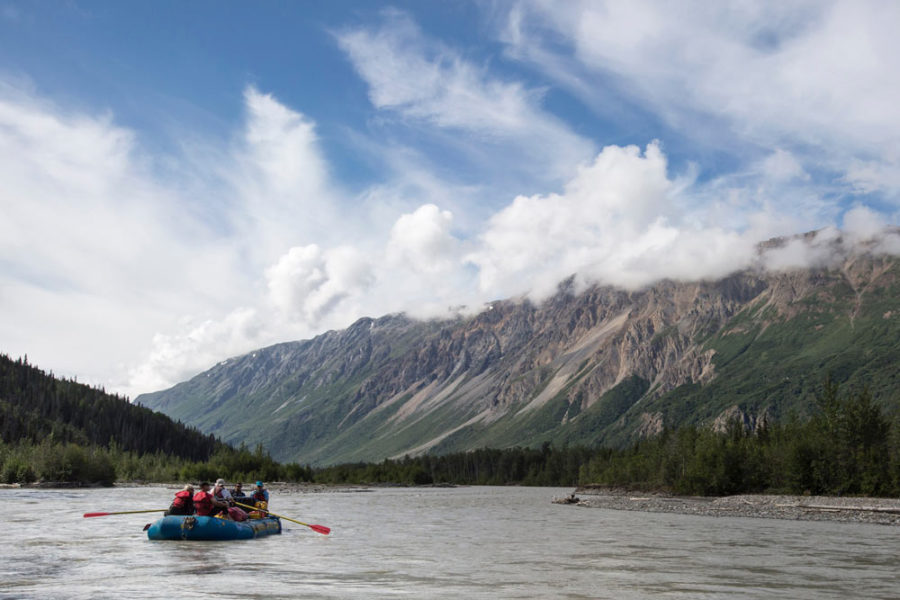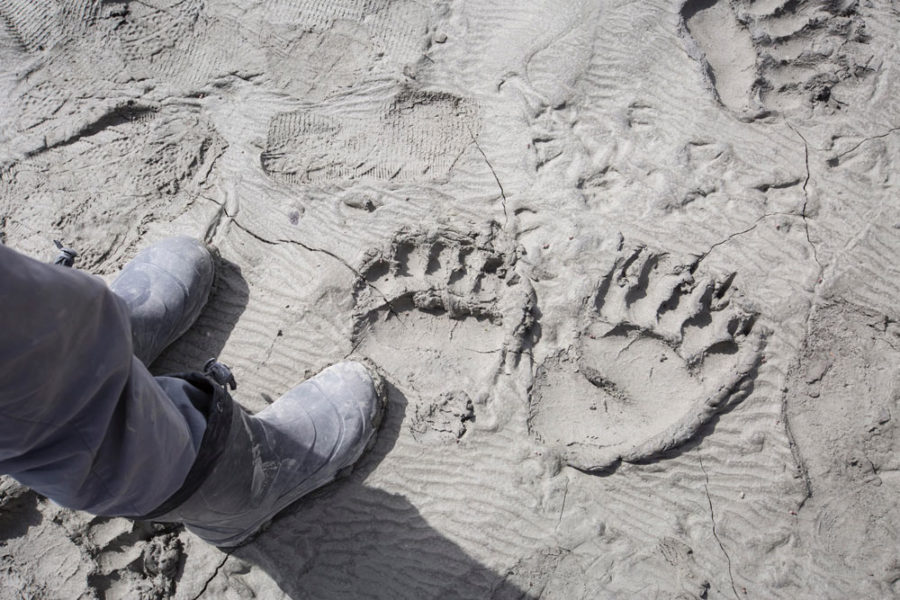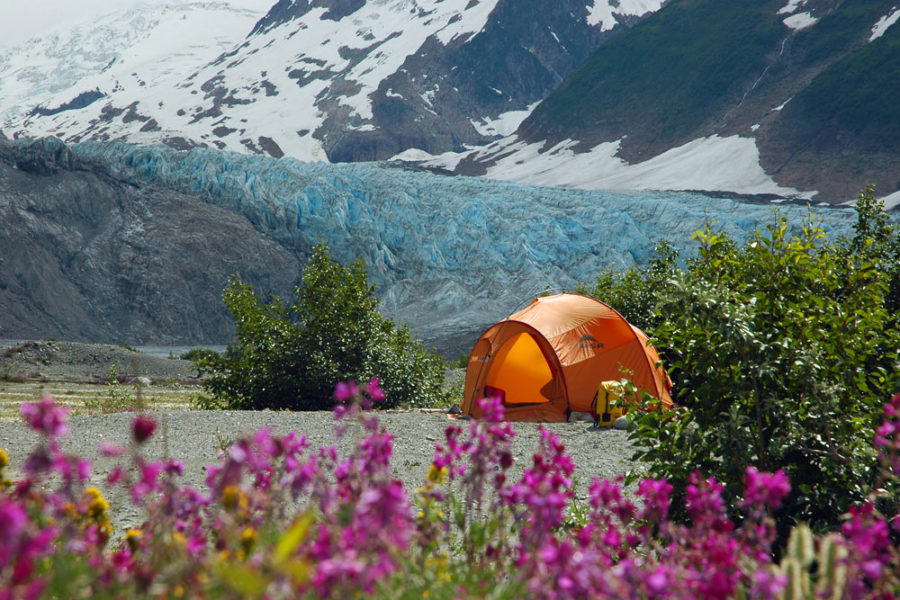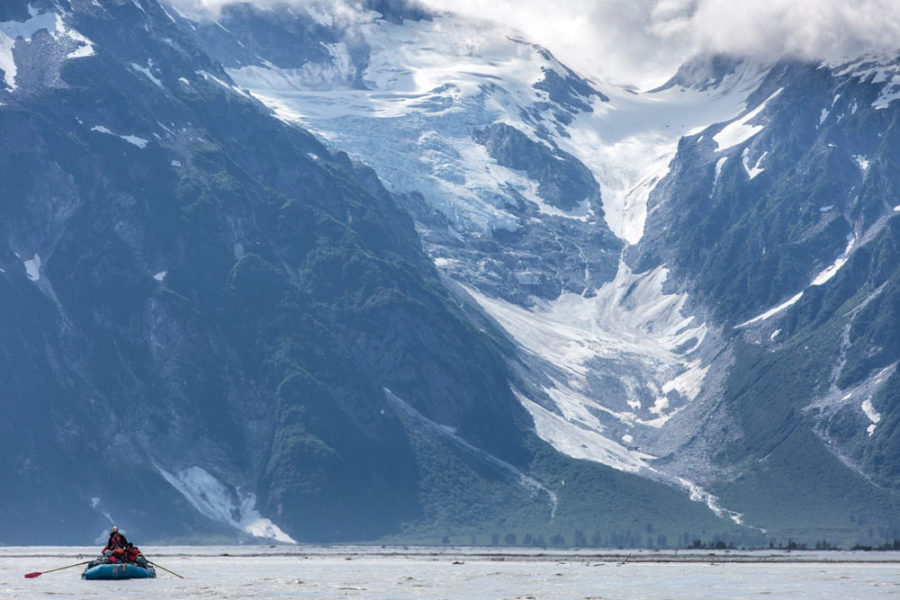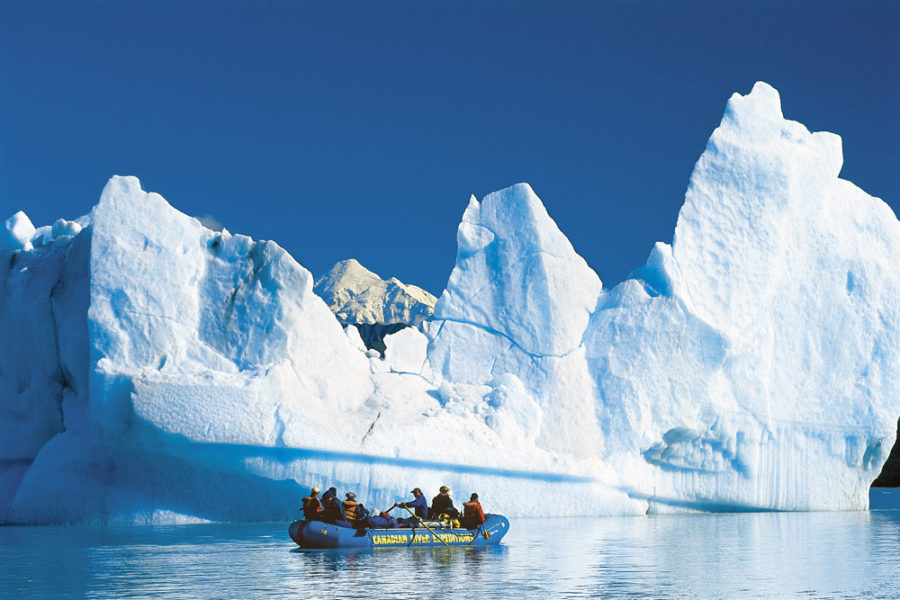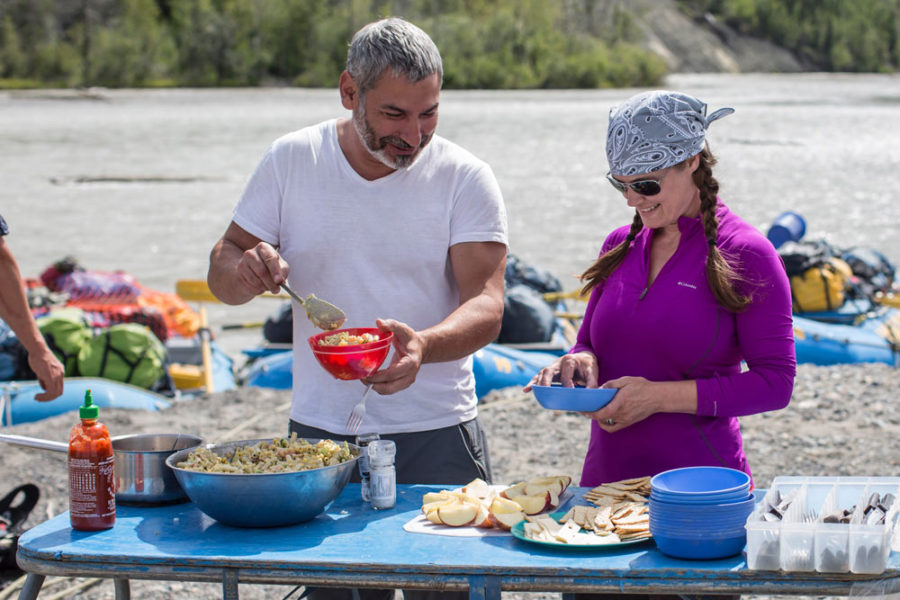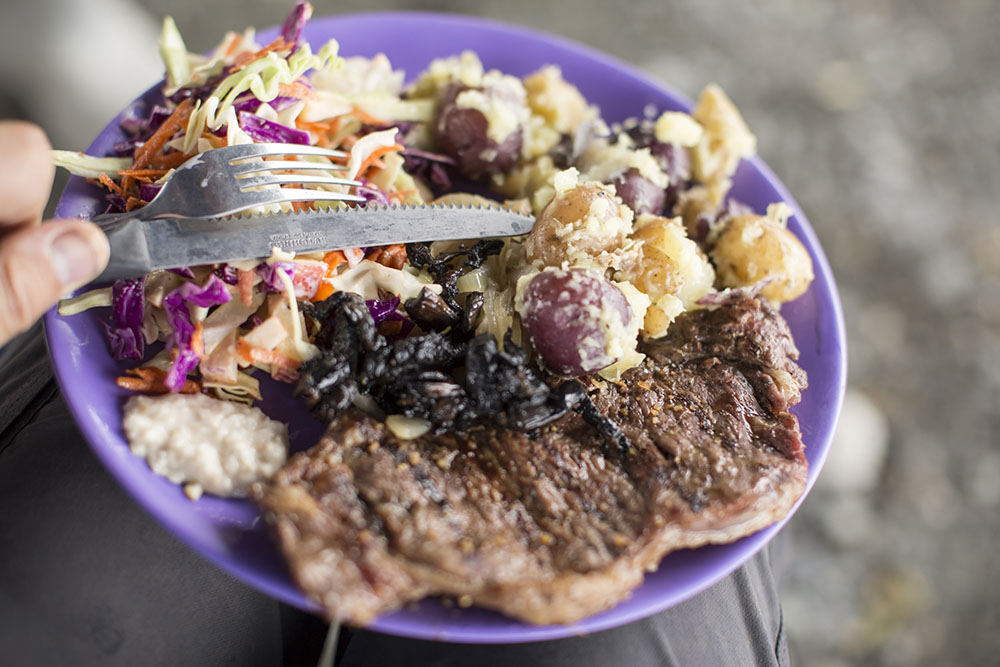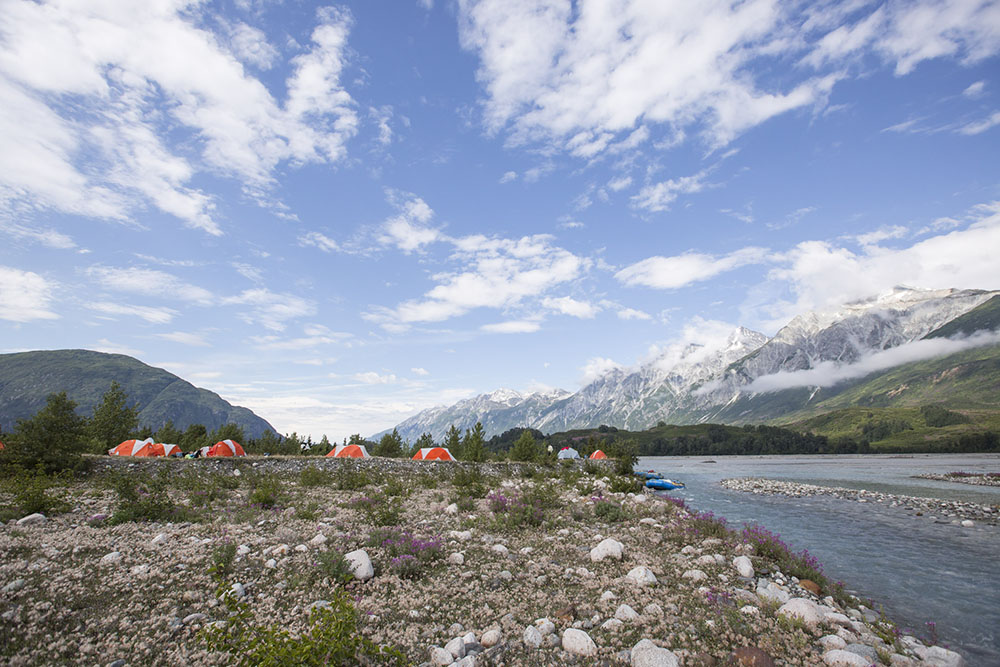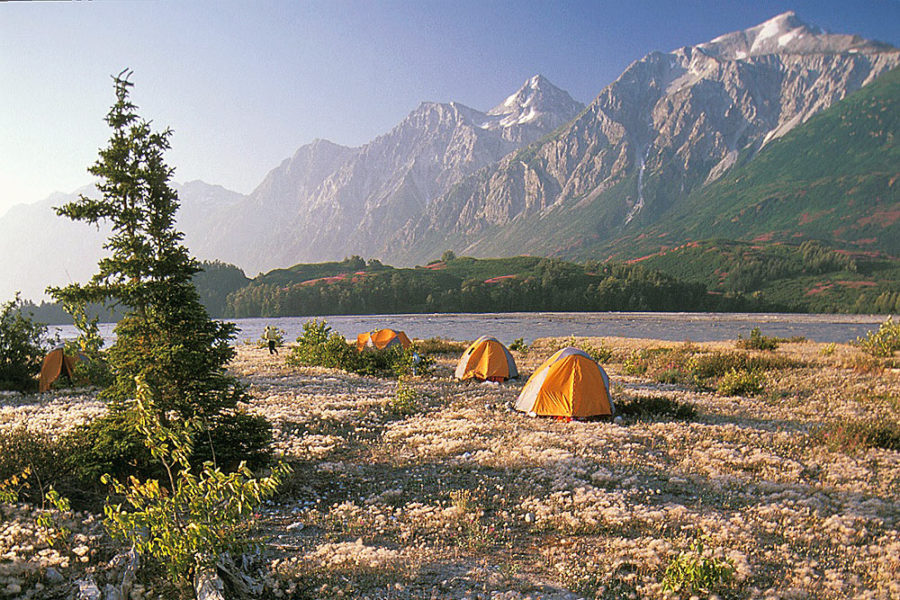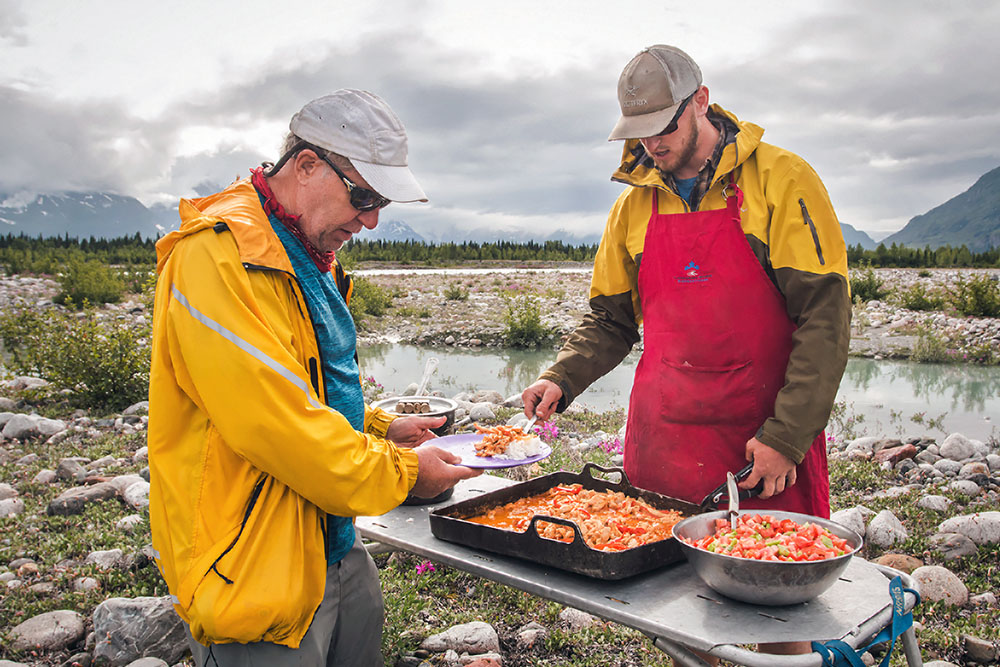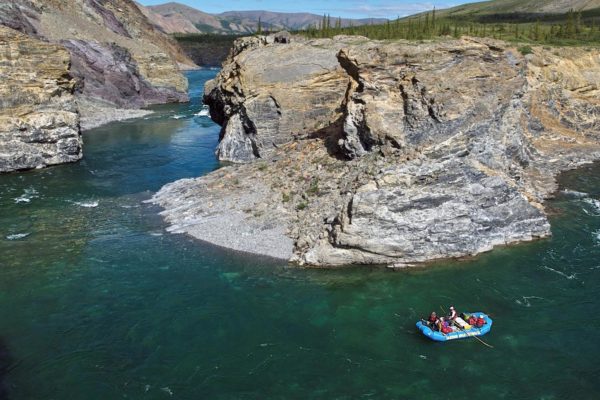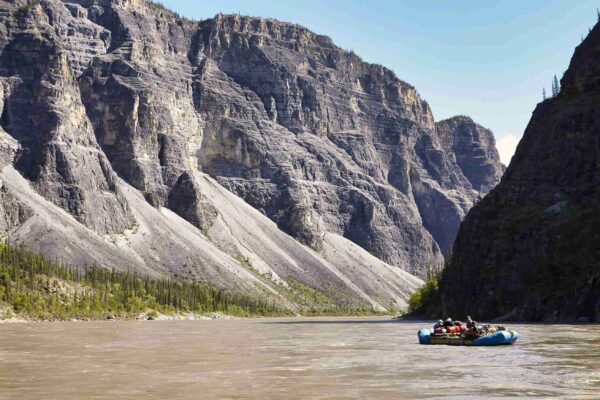Itinerary
DAY 0 – WHITEHORSE, YUKON
This is the first date listed for your trip.
Your journey north from your home will be a refreshing departure. You will fly over the largest expanse of wilderness in the world with stunning views on cloudless days, pass through quieter and friendlier airports and generally begin to immerse yourself in the wilderness experience that is about to unfold.
The scheduled flights arrive in Whitehorse throughout the day. Aim to arrive by 6 p.m. Please make your way to your hotel and plan to rendezvous with your guides at the meeting point confirmed in your Welcome Aboard package at 8 p.m. for an orientation meeting. There will be a chance for last minute questions concerning clothing, gear, packing and other details.
Whitehorse is a great place to spend a few extra days. The historic sites are interesting and there are local day hikes, bike, canoe rentals, dog mushing kennels to visit as well as a National Historic Site and several museums. Renting a car for a day trip through the White Pass to Skagway, Alaska is a popular outing.
DAY 1 – ALPINE SCENIC DRIVE TO THE RIVER
Following breakfast (not covered), we will meet in the hotel lobby at 8 a.m. and will embark on our journey the Alaska Highway. Along the way we will visit Kwaday Dan Kenji (translated: Long Ago Peoples Place). Here we will meet First Nation elders and see examples of native shelters and traditional living skills used by First Nations in the region for 10,000 years. Further on, we will visit the Kluane National Park Interpretive Centre. We then head south into the Kluane Game Sanctuary. The next leg of our journey will take us through the stunning scenery of the Haines Pass. Our objective is the US Customs Post at Pleasant Camp where we clear US Customs before the trip. You may be tempted to have an afternoon nap during the drive, but the scenery will keep you riveted! Later in the afternoon we arrive at Dalton Post, now known as Shawshe reflecting its heritage with the Champagne First Nations. Following a safety orientation we will load the rafts and push off. At this point the Tatshenshini is a narrow stream. Watched by bald eagles we will travel a short distance before reaching the first camp.
DAY 2 – CANYON WHITEWATER
Another safety briefing will prepare us for the day. Before long, as we float deeper into the St. Elias Mountains (19,850 feet) we will encounter Class II – III whitewater jubilantly welcoming us into this land without roads. This is the most continuous whitewater of the trip. As we pass through the narrow gorge of the Tatshenshini and out into the broader valley, we will be paddling out of the Yukon and entering British Columbia. In June 1993 the BC portion of the Alsek and Tat was preserved with the declaration of the Tatshenshini- Alsek Park and is now a Canadian Heritage River. The Tat-Alsek watershed is the heartland of the largest protected wilderness area in the world.
In camp we will relax and dry out after an exciting day in the rapids.
DAY 3 – BALD EAGLES
Today, in contrast to the swift rapids we have descended, the river meanders quietly but surely through the broad valley dotted with oxbow lakes. This region is home to moose, beaver, bald eagles, osprey and many species of waterfowl. Throughout the day the many tributaries of the Tatshenshini cause it to swell until it has doubled in volume from our previous campsite. Here we are treated to our first view of the dramatic Alsek Range.
DAY 4 – RIDGES & MOUNTAIN GOATS
Weather permitting, this is a hiking day. We will spend the time exploring the local area. A hike up to an open ridge offers everyone the chance to overlook the river and surrounding area. A further hike along this ridge offers an alpine meadow hosting an endless variety of wild flowers. Those who are more adventurous can continue to climb another 1,000 metres to the top for a spectacular view of some of the glaciers of the Alsek Range. This area is known as Goat Ridge and often, if we are lucky, we glimpse mountain goats feeding on the open tundra of the high plateau.
DAY 5 & 6 – ST. ELIAS RANGE
We float past the Carmine peaks and the O’Connor River with great views of the far off St. Elias Range. Here we see signs of recent glacial action. The river picks up speed and becomes very braided after an exciting rapid called Monkey Wrench. Moose, mountain goats, grizzly bears and bald eagles often frequent the wide gravel river banks.
DAY 7 – GLACIERS ABOUND
Today we begin to see the many glaciers of the area. From our camp at Melt Creek, near the confluence of the Alsek River, we can count 27 different glaciers. Glorious views can be seen in all directions.
DAY 8 – CONFLUENCE OF GREAT RIVERS
Now, as we speed along with the current, the voluminous Alsek River joins us from the north. So large is the confluence that it is difficult to know exactly where our route lies. The Noisy Range overlooks the confluence where the Tatshenshini disappears in the shadow of the looming Pentice Ice Cap. The surrounding peaks become higher and increasingly majestic, robed in glaciers. We stop at the base of Walker Glacier and its huge moraines. During the night you may hear ice falls– huge blocks roaring down from the heights where they have broken free.
DAY 9 – ALSEK LAKE & BERGS
Back on the river after Cat-in-the- Washing Machine rapid, we float past more beautiful glaciers including the Novatak, nearly six miles wide where it sprawls towards the river.
As Mount Fairweather (15,300 feet) appears around the bend, dwarfing the surrounding 7,000 feet peaks, a narrow sliver of a peninsula separates the river from Alsek Lake.
Here the Alsek and Grand Plateau Glaciers occupy several miles of shoreline where they “calve” huge slabs of ice into the lake issuing a thundering roar. The iceberg-studded lake is an enchanting place to camp.
DAY 10 – GRAND PLATEAU GLACIER
On our layover day, we will relax and enjoy a hike to overlook the bergs on the lake.
DAY 11 – DRY BAY, GULF OF ALASKA & FLIGHT BACK TO WHITEHORSE
The Alsek now passes through a transition from the tallest peaks on the continent to the broad flat Pacific coastline. In this valley we have a vertical distance of over 15,000 feet between us and the highest peaks, an overall elevation difference greater than that of the Himalayas.
Back on the river we pull into shore at the tiny fishing community of Dry Bay where our plane will rendezvous with us in the afternoon. The location is home to a small group of seasonal fishermen. The only access is by air or boat. In all but the worst weather, the bush plane will pick us up and fly us back through the Coast and St. Elias ranges to Whitehorse. Following showers, the group may want to gather at a local eating establishment (not included). Whitehorse is a lively town and it will not be difficult to find a way to enjoy the evening!
DAY 12 – HOMEWARD BOUND
This is the last date listed for your trip.
After goodbyes and a last look around Whitehorse, we will head for home with a cargo of fond and spectacular memories. (We recommend you consider another day in Whitehorse in case of a rain delay from Dry Bay).
Please note: The above is a tentative itinerary and has been designed with much thought to capitalize on the most scenic and exciting parts of the river, while making time on other sections. Your guides will adjust the schedule to make the best use of river and weather conditions. Please ensure that you have a warm winter jacket (think ‘Puffy’) as well as waterproof rain jacket and pants. We rent robust rain gear and rubber boots – more on our ‘Details & Equipment list. Goretex is not a substitute for rain gear on this trip. Lifejackets are supplied. At the fish packing plant in Dry Bay we will be picked up by a bush plane and flown back to Whitehorse. Be sure to have proof of citizenship with you for the US and Canadian customs. Meals and pre- and post-trip accommodation in Whitehorse are your responsibility – the cost is not included in the trip fee. We have attached a list of Whitehorse hotels. Breakfast, lunch, dinner and snacks are included from the Day 1 lunch until the final river meal.

